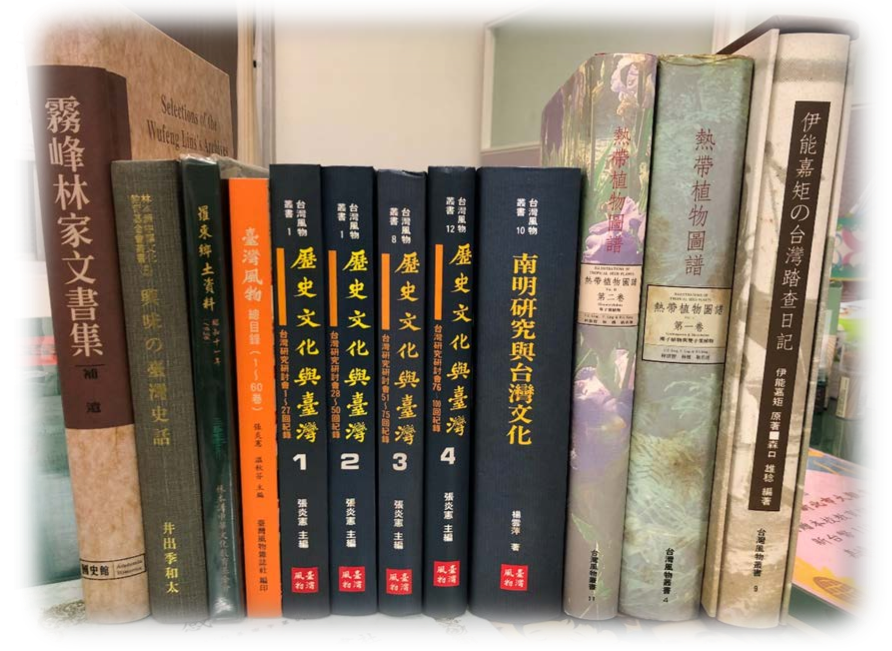 從主宰人民到人民作主
從主宰人民到人民作主
From mastering people to people as masters
李筱峰/Li Hsiao-feng
(世新大學教授)
(Professor,Shih Hsin University)
2001-05-21
 The May 19 Green Initiative, 1987
The May 19 Green Initiative, 1987
5月19日和5月20日這兩個日子記錄了台灣人
民在民主之路上的一些重要的歷史。由半世紀前 5月20日戒嚴令的生效開始,台灣人民紛紛投入一場爭自由、爭人權的長期民主聖戰。本週台灣之窗特別邀請世新大學教授李筱峰為我們細數這場長期戰爭中的數場光榮戰役--無獨有偶地,它們都發生在 5月19日和5月20日;新一代年輕人所熟知的520總統就職日僅是這段自由之路上一個小小的裡程碑而已。台灣人要做自己的主人!李教授敘述這段歷史中每一場 520戰役台灣人為求自主曾有的奮鬥與犧牲,並預示 520爭自由的精神將在未來的民主之路上持續延燒。
The dates May 19 and May 20 mark pivotalpoints in the history of the Taiwan people’s
march toward democracy. From the moment ahalf century ago when, on May 20, martial lawtook effect, Taiwan’s people became embroiledin a protracted holy war for freedom, humanrights and democracy. In this week’s Windowon Taiwan, we have invited history professorLi Hsiao-feng of Hsih-Hsin University torecount a series of key battles in that war,all of which took place on May 20 or thepreceding day. After all, the May 20presidential inauguration day with which theyounger generation are familiar is but arelatively minor milestone in our long marchto freedom and struggle to become our ownmasters. Prof. Li here relates the manyinstances of admirable courage andself-sacrifice associated with May 19 and 20,inspiring us to stand steadfast in theon-going fight for freedom and democracy inTaiwan.
1949年5月19日戒嚴令生效
5月19日和5月20日,在台灣歷史上真是特殊的日子,具有著特殊的意義。 1949年 5月19日﹐蔣介石的國民黨政權還在大陸上面對共產黨革命之際﹐省主席陳誠在台灣頒布戒嚴令。這個戒嚴令於翌日 5月20日清晨起生效,於是台灣進入軍事戒嚴時期。戒嚴令頒布半年後﹐蔣介石政權敗退來台﹐戒嚴繼續實施﹐人民的基本自由人權﹐如集會﹑結社﹑言論﹑出版﹑講學等各項自由,受到嚴重箝制﹐因此有黨禁﹑報禁﹑出國旅行禁……。戒嚴延續了38年之久,直到1987年才解除﹐成為世界實施最久的戒嚴令。 在戒嚴統治的同時,又配合著所謂的「動員戡亂」,使得台灣籠罩在十足的威權體制下。《動員戡亂時期臨時條款》公佈於1948年5月9日﹐當時蔣政權還在南京﹐距行憲不到5 個月﹐就透過這個條款﹐凍結了憲法的部份條文﹐其最主要的作用﹐在擴充蔣介石總統的權力。 戒嚴統治與「戡亂」體制必須透過嚴密的特務系統來推行。1949年成立的「政治行動委員會」成為肅清在台共黨(外加政治異己)的機構。1950年起,蔣介石開始為長男蔣經國從情報、治安系統建立起橫跨黨、政、軍各方面的基礎。50年代中期,成立了國家安全局,統攝各情報機關 (如警備總部、調查局、情報局 )。這些如蜘蛛網般的特務系統發揮了「白色恐怖」的作用,在「肅清匪諜」的理由下,許多人因為政治見解不同,或因批評時政,便被羅織入罪,惹來殺身之禍。從1949年的四六事件,到1960年9月4日的雷震案,10年之間,台灣一共發生上百件的政治案件,約有兩千多人遭處決,八千多人被判重刑。其中除了不到 900人是真正共產黨之外,其餘九千多人是冤案、假案的犧牲者。 在長達三、四十年的「戡亂」體制與「戒嚴」統治之下,海內外有識之士奮起推動民主運動,1950年代有《自由中國》雜誌的言論,及「中國民主黨」的組黨行動(1960)。1970年代有《大學》、《台灣政論》、《八十年代》、《美麗島》等雜誌的衝擊,並以「黨外」的名號,透過選舉推動民主運動,歷經中壢事件(1977年底)、美麗島事件( 1979年底) ,浴火重生,在80年代中期,民主運動進入高潮,要求解除戒嚴的呼聲成為民意的主流。
May 19 / 20, 1949 – Martial law is declaredand takes effect
The dates May 19 and May 20 have a veryspecial significance in Taiwan’s history. On May 19, 1949, with the Kuomintang regimeunder Chiang K’ai-shek engaged in fightingthe Chinese Communist Party-led revolutionon the mainland, Taiwan Provincial GovernorChen Ch’eng proclaimed martial law in Taiwan,which took effect in the early morning hoursof May 20. Thus began the martial law era inTaiwan. Half a year later, the ChiangK’ai-shek government retreated in defeat toTaiwan, where martial law continued in force.With martial law came harsh curtailment ofthe basic human rights of Taiwan’s people -freedom of assembly, freedom of association,freedom of speech, freedom of the press,freedom of movement etc. Thus establishment ofnew political parties and newspapers wasbanned, and travel abroad was tightly restricted.This state of affairs dragged on for 38 years,and martial law was not lifted until 1987,giving the KMT the dubious distinction of beingthe world record holder for longest continuousmartial law rule. The imposition of martial law, in combinationwith the May 9, 1948 promulgation of “TemporaryProvisions Effective During the Period ofCommunist Rebellion of Communist Rebellion”,put Taiwan under the thumb of extremeauthoritarianism. Within 5 months of thisprovision’s promulgation, the Chiang K’ai-shekregime, still based in Nanking, used it tosuspend various provisions of the constitution,with the primary intent of expanding Chiang’spersonal power. Martial law rule and its “rebellion-suppression”polity depended upon the establishment of anextensive spy network. In 1949, a “PoliticalAction Committee” was established as an apparatusmandated to wipe out communist party influencein Taiwan and negate the influence ofnon-KMT-affilitated groups. Beginning in 1950,Chiang K’ai-shek employed the variousintelligence and security organs to lay thefoundation for transfer of power to his eldestson, Chiang Ching-kuo. In the mid 1950s, theNational Security Bureau was set up to serve asan umbrella agency coordinating allintelligence-related organizations (NationalPolice, The Bureau of Investigation , Ministryof Justice, and Intelligence Bureau). Theoperations of this spider-web-like spy networkexerted a “white terror” effect on the Taiwanpeople. Under the pretext of “weeding outcommunist bandit spies,” people who heldopposing political views or dared to criticizethe government were executed on trumped-upcharges. During the 10 years from the April6 Incident of 1949 to the Lei Chen Case ofSeptember 4, 1960, there occurred upwards of100 political incidents resulting in theexecution of approximately 2,000 people andheavy prison sentences for another 8,000. Savefor fewer than 900 who in fact were communistparty members, the remaining 9,000 were thesacrificial victims of fabricated accusations. Through the nearly 40 years of”rebellion-suppression” martial law rule,champions of justice at home and abroadmustered their energies to promote a Taiwandemocracy movement. 1950 saw publication ofthe magazine Free China, and in 1960 actionwas afoot to establish a Chinese DemocracyParty. With the 1970’s came a fieryrejuvenation of Taiwan’s democracy movement,which was advanced through publication ofgovernment-aggravating political periodicalssuch as Ta Hsueh (Great Learning), TaiwanPolitical Commentary, Formosa Magazine, andThe 80s; by means of electioneering ofcandidates under the the “Tang Wai” (non-KMT)quasi-party banner; and through streetdemonstrations culminating in the ChungliIncident of late 1977 and the Formosa Incident(a.k.a. Kaoshiung Incident) in late 1979. Thedemocracy movement reached a high point inthe mid 1980s, by which time cries for thelifting of martial law were shared by thepublic mainstream.
 Crowds gather at Lung Shan Templeas Cheng Nan-jung launches the May19 Green Initiative, May 19, 1986.
Crowds gather at Lung Shan Templeas Cheng Nan-jung launches the May19 Green Initiative, May 19, 1986.
519綠色行動
1986年的5月19日鄭南榕等人發起「519綠色行動」﹐解除戒嚴是行動中的主要訴求。兩百多名「黨外」人士﹐在台北龍山寺廣庭靜坐示威到晚上9時半。這項「519綠色行動」掀開「黨外」人士為時半年的街頭示威運動,向實施38年的戒嚴令挑戰。終於在這年的9 月28日突破戒嚴禁令,成立「民主進步黨」,台灣政治史邁入新里程。在民主運動的激盪之下,歷經蔣氏父子兩代的威權統治,終於在蔣經國晚年逐漸解體。1987年年 7月14日,蔣經國總統果然迫於形勢,宣佈解除長達38年的戒嚴。
解嚴半年後﹐1988年 1月13日,受糖尿病糾纏多年的蔣經國總統病逝,副總統李登輝繼任總統。雖然李登輝在繼任總統的兩週後代理國民黨主席﹐不過當時民間預測﹐這只是一個暫時的過渡而已﹐國民黨政權不可能由土生土長的台籍人士主導﹐因為這將使外來政權的舊勢力寢食難安。
There are only three in northern Taiwan, andMay 19, 1986 – The May 19 Green Initiative
On May 19, 1986 Cheng Nan-jung and otherslaunched the “May 19 Green Initiative”,with the lifting of martial law as itsmajor demand. Two hundred Tang Wai figuressat in meditative repose in the courtyardof the Lung Shan Temple until 9:30 at night.The May 19 Green Initiative triggered aseries of Tang Wai street demonstrationsover a half-year period, posing a challengeto the 38 years of martial law rule andleading to establishment of the DemocraticProgressive Party on September 28 indefiance of martial law, thus marking a newstage in Taiwan’s political history. Underthe surge of the democracy movement, theauthoritarian rule of elder and youngerChiang began crumbling in the later yearsof Chiang Ching-kuo’s reign, ultimatelyforcing him to declare an end to martiallaw on July 14, 1987.
Half a year after the lifting of martiallaw, on January 13, 1988, President ChiangChing-kuo, passed away after suffering fromdiabetes for many years, and was succeededby then Vice-President Lee Teng-huei. Twoweeks after becoming president, Lee alsobecame provisional Chairman of the KMT. Bymost people’s reckoning at that time,however, this was just a transitional phase.The KMT regime, they assumed, could notafford to let a native Taiwanese become itsleader, as this would undermine its oldmainland-expatriate power base.
1988年5月20日農民示威與軍警衝突事件
美國康乃爾大學出身的農經博士李登輝,在繼任總統四個多月後,就碰上了一次大規模的農民請願示威:5 月20日,4000多名來自全島各地的農民,聚集在立法院前面,要求政府禁止美國火雞、水果進口。由於軍警對示威民眾過度挑釁,引發民眾與軍警的流血衝突事件。政治觀察家認為﹐這是國民黨政權中的舊勢力(尤其是軍方)故意給李登輝總統難堪,以打擊他在民間的聲望。 李登輝在接掌過去威權政治的殘餘,一方面要應付統治階層的保守勢力,同時又要面對社會民間的改革要求,這個角色實難扮演。不過,他以堅忍的毅力,和圓融穩健的手法,折衝於新舊勢力之間,他以「走兩步退一步」的步驟,試圖改變國民黨體質與現實政治環境。此時的政治環境雖已經解嚴,但仍有箝制言論思想自由的刑法 100條有關「預備叛亂」的高帽子壓頂,而《動員戡亂時期臨時條款》的大包袱,使國會仍然為一群來自中國大陸而不必改選的老代表所把持。
May 20, 1988 – Farmer protesters clash withmilitary and police
Four months after accession to the office ofpresident, Lee Teng-hui, with a doctorate inagricultural economics from CornellUniversity, was confronted with a large-scaledemonstration by farmers seeking redress ofgrievances. On May 20, more than 4,000farmers from all over Taiwan converged on theLegislative Yuan, demanding a ban onimportation of turkey meat and fruit fromthe US. Due to the excessive aggressivenessof soldiers and policemen, a bloody meleeensued. Some political observers are of theview that this was an intentional bid byold-guard KMT power circles (particularlyin the military) to make Lee Teng-hui loseface and to damage his prestige in the eyesof the people. As heir to the remnant of an authoritarianregime, Lee had to deal with conservativeelements in the KMT ruling structure whileat the same time facing up to popular demandsfor reform – an extremely difficult role toplay. Nevertheless, by dint of an unwaveringfortitude and a tactful, deliberate approach,he succeeded in defusing tensions between newand old powers. He endeavored to transformthe KMT and the practical politicalenvironment by a pragmatic “two-steps-forward,one-step-backward” approach. While by thattime politics had emerged from the shadow ofmartial law, it was nevertheless stillseriously stunted by the threat of prosecutionunder Article100 of the criminal law aimed atpunishing “preparation for insurrection,”which seriously effected freedoms of speechand thought; besides which, the onerous,still-in-force Temporary Provisions EffectiveDuring the Period of CommunistRebellion-of-Communist-Rebellion served tokeep the Legislative power firmly in thegrip of elderly KMT-appointedmainland-expatriate legislators-for-life.
 Farmer demonstration, May 20,1988. Farmers riding mechanizedtillers confront military andpolice in front of thePresidential Office Building
Farmer demonstration, May 20,1988. Farmers riding mechanizedtillers confront military andpolice in front of thePresidential Office Building
1989年5月19日自由鬥士鄭南榕盛大的喪禮
1989年4月7日,曾發起「519 綠色行動」的《自由時代》雜誌創辦人鄭南榕因刊登許世楷教授的台灣新憲法草案﹐遭統治當局控以「叛亂」﹐鄭拒絕出庭應訊﹐於警察前來拘提時﹐引火自焚﹐震驚全國! 5月19日舉行鄭南榕的出殯﹐出殯的行列長達兩公里多﹐這是繼58年前台灣抗日運動領袖蔣渭水的「大眾葬」之後﹐再出現的一次盛大喪禮。正當出殯的行列受阻於總統府前的路上時﹐一位民運的基層義工詹益樺﹐也在現場引火自焚去世。台灣的民氣,達到了燃點。
May 19, 1989 – Massive funeral processionfor freedom fighter Cheng Nan-jung
On April 7, 1989, Cheng Nan-jung, instigatorof the May 19 Green Initiative, and founderof the Freedom Era Weekly, was charged byauthorities for “insurrection” after havingpublished the rough draft of a newconstitution of Taiwan by Prof. Hsu Shih-kai.When police came to arrest him after herefused to appear in court, he self-immolated,shocking the entire nation! When on May 19,Cheng’s coffin emerged from the governmentfuneral home for burial, the funeralprocession was 2 kilometers long! Not sincethe funeral of anti-Japanese leader ChiangWei-shuei 58 years earlier had Taiwanwitnessed such a massive popularparticipation in mourning for a hero.When the procession was blocked in frontof the Presidential Office Building, agrassroots democracy movement volunteer,Chan I-hua, followed Cheng’s example,immolating himself and dying on the spot.The anger of Taiwan’s people had reachedthe boiling point.
1990年 5月20日萬人示威大遊行,抗議軍人組閣干政
時序進入1990年,李登輝當選第八任中華民國總統,提名軍人郝柏村組閣,這是李登輝的「退一步」策略,但立即引起民間反彈,5 月20日,萬人示威遊行,反對軍人干政。不過,李登輝的「進兩步」手法,又馬上發揮作用,他透過學生運動,召開國是會議,促成了資深中央民代的退職。
May 20, 1990 – 10,000 marchers protestmilitary man as premier
Following upon Lee Teng-hui’s assumingoffice as the 8th non-popularly electedPresident of the Republic of China in 1990,he appointed General Hao Pei-tsun as Premierto head up his cabinet. This was one of his”one-step-backward” ploys, which immediatelyincited a popular backlash, occasioning a10,000-strong demonstration processionprotesting interference of the military ingovernment. Lee immediately responded witha “two-steps-forward” tactic. Workingthrough student movements, he convened anational affairs convention, which had theeffect of accelerating removal of oldlegislators appointed under the old regime.
1991年5 月20日「知識界反政治迫害聯盟」的萬人大遊行
1991年4 月他召開國民大會臨時會,制訂憲法增修條文,廢止《動員戡亂時期臨時條款》。時代潮流又向前一步,但另一股逆流又隨之而來,同年5月9日,陳正然等四名青年因為參加「獨立台灣會」被逮捕,引發 5月20日一場「知識界反政治迫害聯盟」的萬人大遊行。4個月後,又有學界發動的「100行動聯盟」,主張廢除刑法100條。翌年5月15日,立法院終於通過修正刑法 100條,取消「陰謀內亂罪」及「言論內亂罪」。台灣的言論自由更獲一層保障。
May 20, 1991 – Intellectuals Against PoliticalPersecution march in protest
In April of 1991, Lee convened an extraordinarymeeting of the National Assembly to passamendments to the constitution and rescind theTemporary Provisions Effective During the Periodof Communist Rebellion-of-Communist-Rebellionlaws. This forward surge of the tide of changewas followed, however, by a retrogressive ebbwhen, on May 9 of the same year, Chen Cheng-janand 4 other youths were arrested for taking partin a Taiwan independence gathering. This sparkeda May 20 protest march with 10,000 participants,organized by Intellectuals Against Politicalpersecution, followed four months later by the”100 Initiative Alliance,” which demanded therepeal of Article 100 criminal law. On May 15,1992, the Legislative Yuan finally passed a billrevising Article 100 of the criminal law, wherebylaws concerning “conspiracy to inciteinsurrection” and “public advocation ofinsurrection” were repealed.
1996年5 月20日台灣第一任民選總統李登輝就職
2000年5 月20日台灣第一任非國民黨籍民選總統陳水扁就職 在李登輝與民間民主運動的配合下,台灣逐漸民主轉型,1996年台灣終於舉行有史以來的第一次總統民選,李登輝當選第一任的民選總統,5 月20日,是這位民選總統就職之日。4年後,2000年的5月20日,第一位非國民黨籍的民選總統陳水扁就職。 從這五十多年來的歷史看,5月19日和5月20日真是具有特殊歷史意義的日子。它是戒嚴軍事統治的起點,它有台灣人民取爭自由民主的奮鬥紀錄,它更是民主轉型的標誌。 然而,撫今追昔,國民黨的舊勢力仍盤根纏結在許多部門,舊結構仍未解除。在民主的潮流中,台灣人民要繼續前進,不要被舊勢力的暗流與逆流給吞沒!
May 20, 1996 and May 20, 2000 – Inauguration ofpopularly elected presidents
Thanks to the combined efforts of the people’sdemocracy movement and Lee Teng-hui, Taiwan wasgradually transformed into a democracy. In 1996,Taiwan finally conducted its first-ever popularelection of a president, resulting in LeeTeng-hui’s inauguration as president on May 20of that year. Four years later, on May 20, 2000,Taiwan’s first-ever popularly elected, non-KMTpresident, Chen Shuei-bian, was inaugurated. As we can see from this summary of the past 50years of Taiwan history, May 19 and May 20 holda very special meaning for us. These datessignify the initial imposition of martial lawrule, the Taiwan people’s struggle for freedomand, most importantly, the actualization ofdemocracy in Taiwan. Nevertheless, reflecting upon past andcontemplating present, we must recognize thatremnants of the KMT’s old power structure stillhaunt us, stubbornly rooted in and clinging tovarious levels of government. The people ofTaiwan therefore must not relent in theirstruggle for democracy, and must not allowthemselves to be swept away by the retrogressiveundertow of old power.
Edited by Hsu, Shiou-Iuan/ translated by Elizabeth Hoile
(李美儀編輯/何麗薩翻譯)









